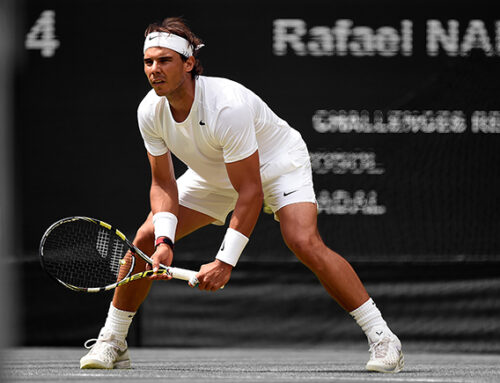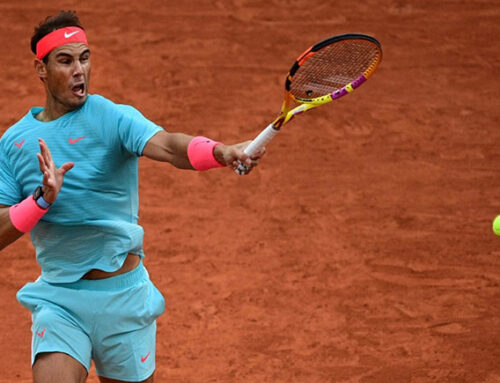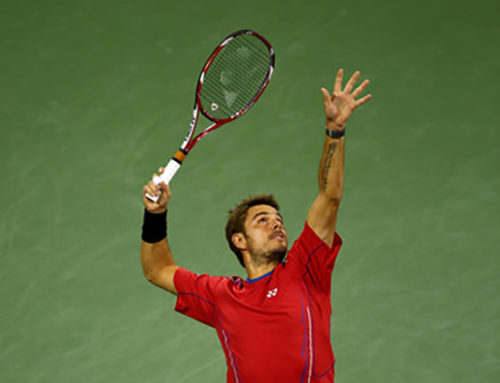Breaking Down Delpo’s Forehand
If I were to go down the short list of the biggest weapons in the sport of tennis, the forehand of Juan Martin del Potro would be high on that list. In terms of sheer velocity with precision, there are precious few groundstrokes that even begin to compare. For a 6’6 man, del Potro has serve that is good but not great. He is 19th on the tour in ace %, with many shorter men ahead of him. del Potro’s backhand is similar – a solid stroke without being spectacular. Delpo has ridden his forehand to a US Open title, and two Olympic medals.
What makes it so good?
Grip
The first part of understanding del Potro’s incredible pace of shot is the grip – just how he holds the racquet.
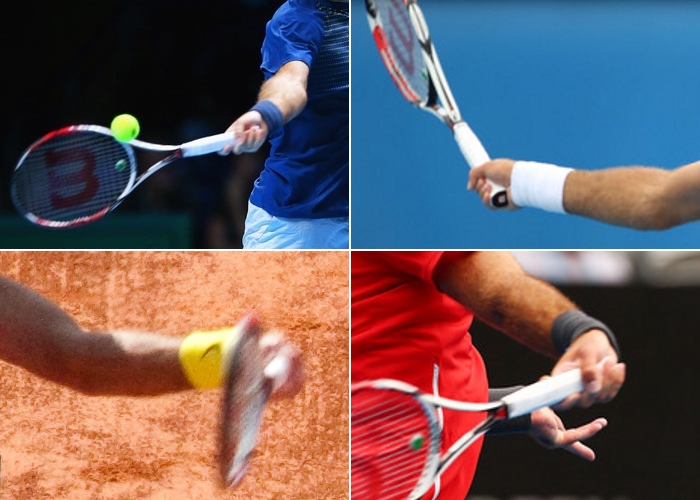
Juan Martin is using an Eastern forehand grip on his forehand – the same grip used by Federer. While it has fallen out of vogue with the vast majority of coaches, the Eastern forehand grip is the grip that makes it easiest to achieve full extension of the arm at contact. Additionally it is the grip that allows for a harder, flatter shot on the widest variety of ball heights (although it helps when you’re 6’6 like Delpo!).
The Take-Back
The second piece of the power puzzle for Delpo is his take-back. del Potro’s forehand take-back is an unusual one in the modern game. Most of the modern elite forehands begin with the hand preceding the racquet head during the earlier stages of the swing. Delpo does the opposite.
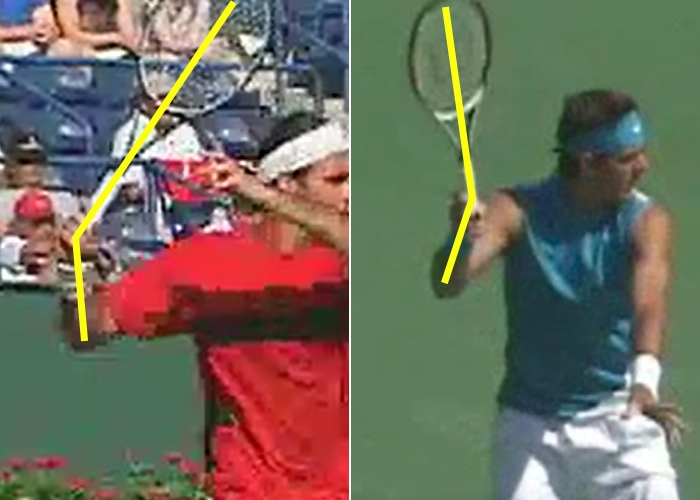
I’ll compare it in this case to Federer, whose forehand is generally a heaver yet lower velocity ball than del Potro’s. The difference is quickly and easily apparent. But what impact does this initial position actually have?
When we look at the stage of the forehand that will immediately follow this moment in time, the position of the racquet head relative to the hand and forearm has a big impact on the ease of wrist movement and engagement. From Federer’s position it is very easy to create what I term ‘wrist-lag’, whereby the racquet head is behind the hand in the stroke and must accelerate rapidly to catch up. This is a position from which the wrist can be heavily engaged in the stroke, and allows for easier and higher spin production.
In contrast, del Potro is situating himself for minimal wrist movement, which will lend itself to a flatter ball. The plus side is with less moving parts, there may be a precision-advantage.
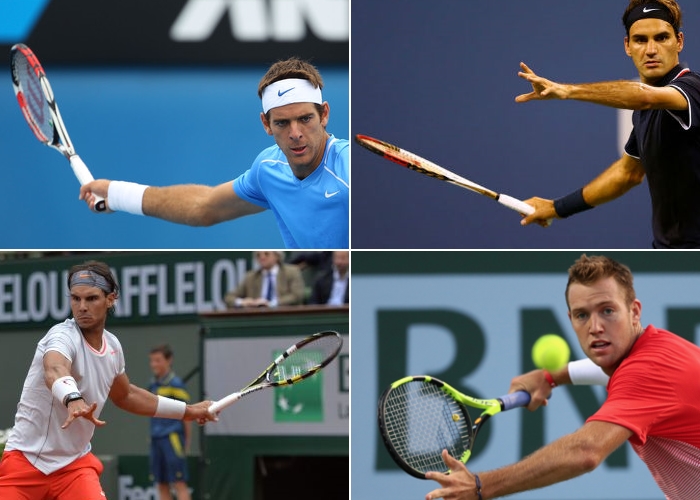
When we look at similar positions from these four players, it’s easy to see who is likely to hit the flattest ball out of them all. Delpo’s racquet face is open, and ready to drive directly through the ball. The other three all have the racquet face closed off to varying degrees, and are set up for massive wrist engagement and a much more heavily spun ball.
I feel compelled to mention at this moment that the setup of, say, Federer doesn’t preclude him from hitting a very hard, very ‘flat’ ball. Indeed we’ve seen Roger do so at will throughout his career. Federer is certainly capable of hitting del Potro level pace off the forehand, he just has made a conscious choice not to as often. The forehand structure of Federer allows for more variety and options than del Potro’s – it is a technically superior shot. However for del Potro, the sustained pace, power and aggression make perfect sense in the larger picture of his game.
The Extension
The final piece of the puzzle for the power of del Potro’s forehand is his extension to the ball. This is where physics and tennis meet. We know from physics, that if an object is traveling at a given rotational velocity, the further from the center of rotation the object is the faster it’s linear velocity. In plain English, the further from your body you hit the ball, the faster your racquet is going (all other things being equal).
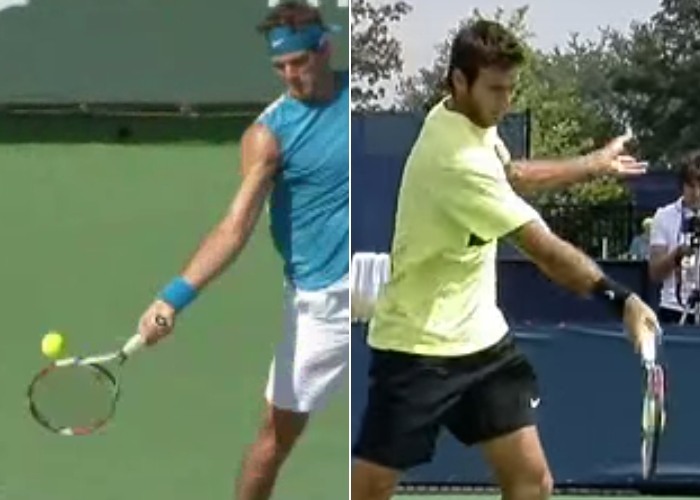
As we can see from these two images, Delpo gets great extension to the ball. On his typical forehand, his arm is either dead straight, or has a very small bend in it. Part of the beauty of Delpo’s forehand though is his height – at 6’6 he has arms that are, well, probably longer than yours. A lot longer. This means his extension to the ball is going to be longer, and as a result he can just hit the ball harder than most people.
Trunk Rotation
Del Potro’s forehand is a little unusual in this area. The modern forehand is very much a rotational stroke – players coil to varying degrees with their hips and shoulders. Much is made by many teaching professionals about this being the main source of power in the stroke. It is interesting then that one of the most powerful forehands in the history of the sport employs relatively little shoulder rotation!
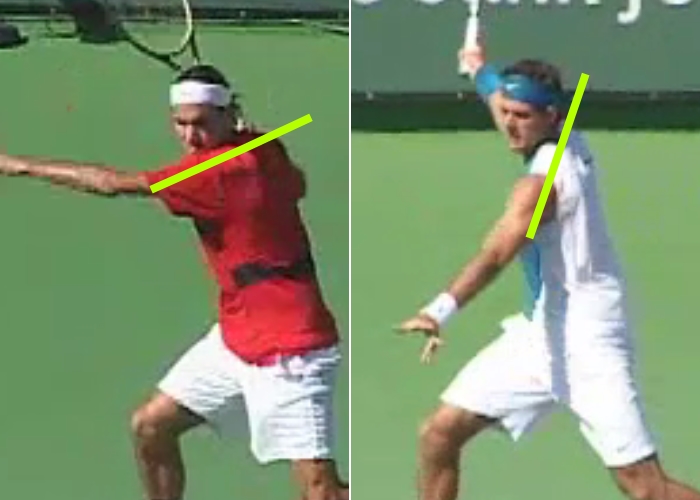
In the image above we compare his shoulder rotation to that of Federer in 2004. As you can clearly see, del Potro has less rotation of the shoulders than Federer does. It is interesting to note also the way del Potro’s right hand is not as far ‘behind’ the contact point as Federer’s. This means that del Potro will have a more linear swing path with his hand from this position to the point of contact, whereas Federer’s will be more rotational. How does the shoulder rotation of other players compare?
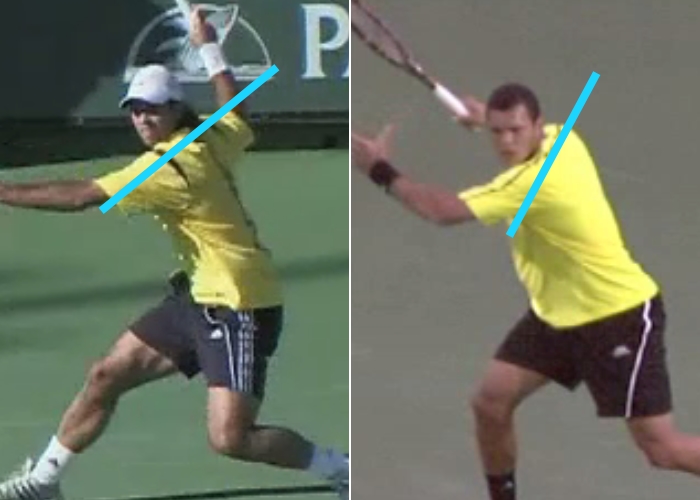
A quick look at two other pretty big forehands – Fernando Gonzalez on the left and Jo-Wilfried Tsonga on the right show that del Potro’s shoulder rotation is smaller than not only Federer’s. Both of these players have more trunk rotation than Delpo does on his forehand.
That’s all well and good, but what does this actually mean?
Pluses and Minuses
This is where we get into some tricky areas of high level tennis technique. We can say with some level of certainty that del Potro gives up something with his reduced torso rotation – namely the potential for higher racquet-head speed due to an increased acceleration distance. But when we’re talking about one of the biggest forehands in the history of the sport, does that have any practical implications? And is it possible that maybe, just maybe, this reduced rotation gives Delpo some advantages?
Here’s the reality – the pace of Delpo’s forehand, while formidable, isn’t really that extraordinary on the professional men’s tour. There are plenty of guys out there able to hit absolutely huge forehands. What does make del Potro’s shot especially special is the precision with which he wields that power. Most players on the pro tour with big forehands are also hitting with a lot of spin – spin that they need to control the higher speed ball and increase their margin for error. Delpo eschews that heavier spin needed by normal forehands.
It just may be that his lessened shoulder rotation, while sacrificing some small amount of racquet head speed, pairs with his more linear stroke to give him a more consistently reproducible stroke. That he gives up a hint of power – which he has in abundance – for more stability, which he needs given his lower margin for error.
Summary
Del Potro’s forehand is one of the most potent weapons in the game. The few key factors that allow him to hit with such pace and precision are:
- Eastern forehand grip, which allows him to hit a flatter ball over a wider range of contact points
- His unusual take-back, which primes his stroke to use less wrist than most modern forehands
- The extension afforded him by his stroke combined with his 6’6 frame
- His stroke, while more linear than many at the top of the game, is also very stable and accurate
Can you hit forehands like Delpo? Maybe not exactly. But understanding the pieces that come together to give him this stroke will allow you to hit in a more Delpo-like fashion.
Questions or comments? Send me an email! glen@tacticaltennis.com

